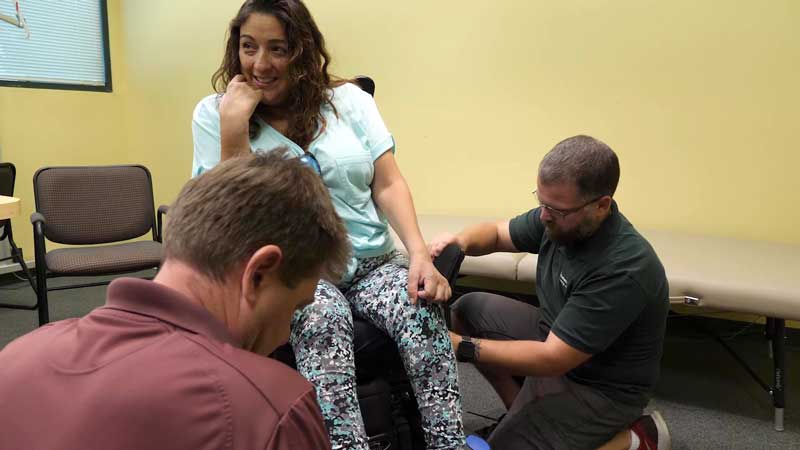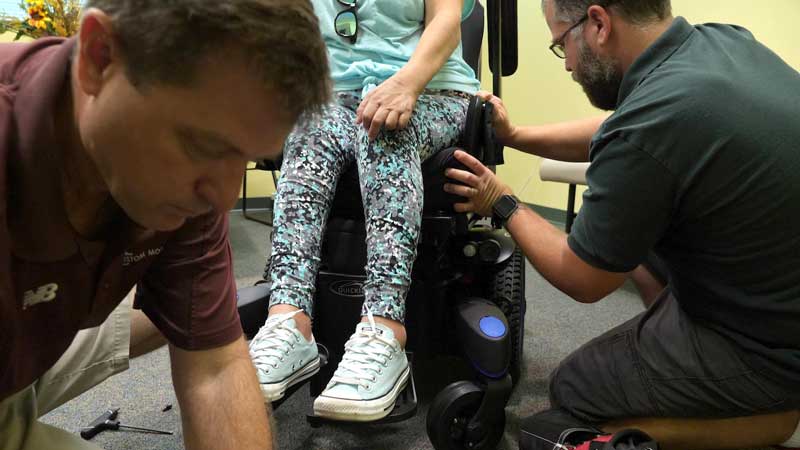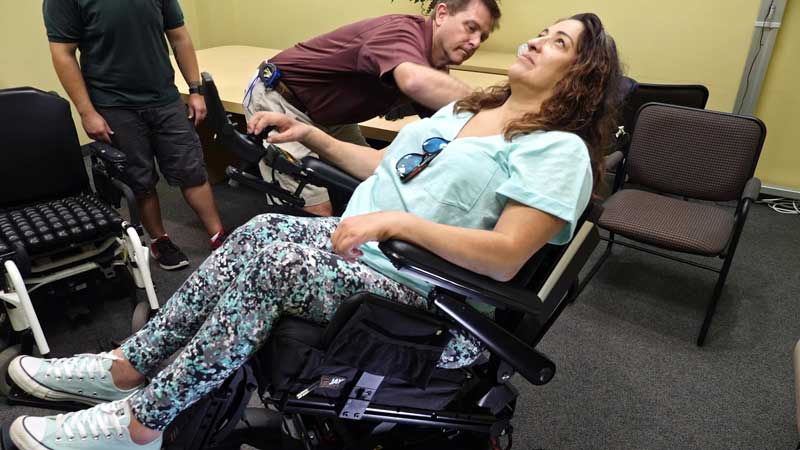As a member of a seating and mobility team in Long Island, New York, one of the more frustrating occurrences was delivering a wheelchair to a person who waited through the incredibly long justification, approval, and ordering process only to find out that the person had physically changed and the frame of the power wheelchair needed to go back to the dealer to be adjusted. We know that for many of our clients who have waited a very long time, the thought of having to send the wheelchair back to the dealer when delivery is so close is very upsetting for them.

However, innovation in power seating frames is changing that situation! Modular designs in power seating frames now allow adjustments in the clinic during the fitting and delivery process. One example is the new SEDEO PRO seating system. This design means that we do not need to send the chair back to the dealer for many modificiations. Simple adjustments can be handled directly in the clinic or the field. This makes the delivery process and the ongoing support of the power wheelchair so much more productive, efficient, and pleasant.
Another situation that often occurs in clinic is when the client arrives for a "minor adjustment," such as "my headrest moved" or "my laterals need to be wider." It is at this point we might realize that the minor adjustment or repair is much more involved. Sometimes, the client has gained weight or presents with changes in their posture which require a new seating assessment. This situation often requires referrals to the physician and therapist. In the meantime, how do you let an individual leave without addressing the issues that need to be resolved?
Typical concerns with taking on these adjustments include:
- Not adequately scheduling the time for the wheelchair modification
- Transferring the patient in and out of the wheelchair to do adjustments
- Therapists don't have all the tools necessary to make adjustments
- Need to send wheelchair to the dealer to make adjustments
Power wheelchair seat frames with new modular designs are ideal for changing conditions. Imagine the ability to make minor changes in the seating system without the burden of removing the patient from the wheelchair. Or simple adjustments without needing any new parts can be a lifesaver to a patient while they wait for a full evaluation. If these adjustments can be easy and quick, the therapist can do it in the clinic during the appointment. The modular design provides infinite adjustments and can be individually adjusted with just one tool! No more looking for the right size hex key through the pile of tools in the drawer! The 5mm hex key is located under the seat rail of the SEDEO PRO.

Adjustments can be made quickly and many with the client still in the seating system. The seat-to-back angle (trunk-to-thigh angle), footrest angle (thigh-to-lower-leg angle), ankle support angle (lower-leg-to-foot angle), and armrest height & length can all be adjusted with the client in the chair as long as the body part is unweighted. Adjustments of seat width and depth following the provided markings to ensure accuracy during the adjustment. Infinite adjustments mean that you don't have to settle for the "in between" increment. Another option is the ability to adjust the seat and backrest width independently of each other. Most of our clients do not have hips and backs that are the same measurement.
While the SEDEO ERGO requires very detailed recommendations to meet the specific needs of the client, the SEDEO PRO allows for less specificity while still meeting the client's needs. The modularity of the system can achieve this. The SEDEO PRO can give us confidence in ordering only what is needed at the current time. The modularity of the system allows us to add components to meet the client's future needs. Funding sources respond favorably to requesting only what is needed at the time of the request.

The SEDEO PRO indeed is that "problem solver" for the clinician! It provides adjustability with ease and speed! It also provides modularity to give us confidence with our recommendations. This not only benefits the clinician, but also the supplier in the field. These benefits are directly felt by the end user who can receive a quality product with confidence.